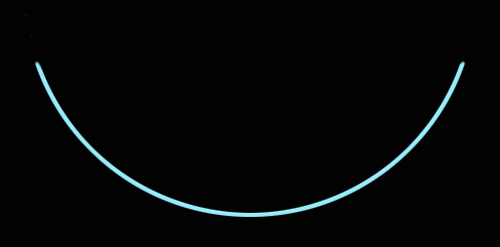Wed 28 Sep 2011
Would You Like That Gift-wrapped?
Posted by anaglyph under Australiana, Bizarre, Creepy, Ephemera, Ooky, Scary
[12] Comments

Sometimes you find some very disconcerting things whilst browsing in secondhand shops.
Wed 28 Sep 2011
Posted by anaglyph under Australiana, Bizarre, Creepy, Ephemera, Ooky, Scary
[12] Comments

Sometimes you find some very disconcerting things whilst browsing in secondhand shops.
Wed 31 Aug 2011
Posted by anaglyph under Australiana, Religion, Scary, Science, Skeptical Thinking, Stupidity
[3] Comments

OK, well, as I hinted in the first part of my examination of Transforming Melbourne‘s hysterical Christian diatribe, I’ve saved the most misleading and offensive portion of it until last. As I’ve been writing, I’ve realised that it was getting rather longer than I like, so I’m going to break my analysis up into chunks, and intersperse them with other funnier stuff. See how much I love you all?
Shall we resume?
After making some valid points about the current role of religion in Australian society, ((Contrary to what Rob Isaachsen and his fellow Transformers think, rational people like myself can see that various Churches have done good things for Australian society. What we question is not the charitable acts, but the motivations behind them.)) Mr Isaachsen eventually says what is on his mind. And what an enlightening glimpse into the thinking of a religious person it is:
SOCIETY UNDER ATHEISM
Atheists have a very powerful voice in the media in Australia, frequently broadcasting biased opinions about the importance of rejecting all religion (especially Christianity) claiming it is of no value to society, is non-rational and a deception to the population. They have staged major conferences (including with government assistance) to promote atheism and denigrate religion and are calling on governments to end to the opportunity for any Christian content to be allowed in state schools and certainly to cease any funding for such!
Whoa. I’m almost tempted to laugh here, so hyperbolic does this document become in such a short few sentences. Atheists have a very powerful voice in the Australian media? Really? That comes as a big surprise to me, and I am pretty tuned in to such things. I think what is most upsetting for Mr Isaachsen and his Church is that atheists are actually voicing any opinion at all. He makes it sound like atheists are in control of the airwaves in Australia and that is very far from the truth. If there is anything surprising at all about atheist voices in the Australian media, it is that they have mostly been conspicuous by their absence until recent times. Atheist opinions are significantly challenging for the Church, which has for most of Australian history, had a kind of carte blanche – an unspoken imprimatur, even – to do be the sole arbiter of morality and ethics in Australian life. They really don’t like having that status quo questioned. And the pointed addition of ‘They have staged major conferences (including with government assistance)’ is spectacularly petty. Any assistance given to humanist, rationalist or atheist movements, as Mr Isaachsen must clearly be aware, is a piss in the ocean compared to the kind of government benefits accrued by religions in Australia. Is he trying to get Christians annoyed that some of their tax dollar is going to atheists? Well, sir, welcome to our grievance.
Mr Isaachsen accuses atheists of having biased opinions – a self-evident proposition if ever there was one. They’re hardly going to be unbiased when dealing with the enormous self-righteousness of Christians. He probably believes his bias is superior because he’s got God on his side…
In a vast and incorrect generalization he blankly states that atheists claim that religion ‘is of no value to society’. I doubt you’d find many atheists who would be that extreme and that declamatory. Religion quite evidently has brought value to society, but the question is how much currency that value now has, what that value actually is, and how important or relevant is the religious component of that value? This is a big problem for religion, and for Christians in particular, because their morality and their charity is so caught up in the edict of Jesus to evangelize that they simply can’t understand that good deeds can be, and are, done without an agenda imposed by a supernatural agency.
For example, earlier in the Transforming Melbourne tract, Mr Isaachsen has gone to great pains to point out all the wonderful things that Christian charities have achieved, and the heavy implication is that without them, non-religious people would commit no charitable acts of any kind, ever. He neglects to mention that huge compassionate non-profit organizations like Amnesty International, Médecins Sans Frontières, Malaria No More, Humanist Charities, the Red Cross and many, many others operate without having heeded ‘Jesus’ call to compassion and justice’. What’s more, these organizations can easily be argued to be more selfless than any of Mr Isaachsen’s examples of Christian charity, for the simple reason that they act out of human compassion and human compassion alone. They are not acting on a command to be good, or being goaded on by the Big Carrot of Heaven or the Big Stick of Hell.
Rob Isaachsen is trying to paint a picture that says an atheist can have no compassion, no care, no charity, no love, no human empathy. And yet it is a trivial task to show he is wrong. He might do well to reflect on the fact that one sincere act of atheist kindness makes nonsense of his whole religion.
[…to be continued…]
Mon 25 Jul 2011
Posted by anaglyph under Hmmm..., In The News, Mathematics, Numbers, Scary, Science, Skeptical Thinking
[30] Comments

One of the big topics in the skeptical community at the moment (like everywhere else I guess) is the climate change issue. It’s a subject that is as fraught with debate as that of Evolution vs Creationism, and indeed, has many of the hallmarks of that particular tussle. What makes it particularly volatile in this setting, though, is that many of the people who claim that there is no need to worry about global warming paint themselves as climate change skeptics, and take the position that they offer a rational approach to the debate. What they are in fact doing is voicing opinions that are in contradiction to MOST of the world’s knowledgeable climate scientists. Though they like to think of themselves as skeptics, this stubborn entrenchment in a belief system has earnt them, instead, the badge of climate change deniers.
I pretty much stay out of the climate change argument, just as I stay out of the Creationism debate. It’s not that I don’t have a strong view on global warming. I think the scientific evidence is conclusive that we have a looming disaster on our hands, and that it’s a disaster of our own making. Bothering to argue with the deniers though is the mental equivalent of jabbing a sharp pencil repeatedly into the back of your hand – a sensible person stops doing it pretty quickly.
The main problem is that, as with evolution, climate science deals with concepts that don’t come easily to the natural human way of thinking. With evolution it has to do with vast amounts of time (which we’re not good at comprehending) and the complexity of the vectors that come to bear on natural selection. With climate science, it’s all in the maths. I’m going to attempt in this post to show you why, even if you haven’t kept up with all the marginalia of the climate discussion, you should be afraid of what we’re doing to the planet.
At the outset I will state that my essay takes one idea as a given: that global warming is a human-instigated phenomenon. You should understand that a cornerstone of the denier’s ‘argument’ is that it isn’t, but I will stand behind the overwhelming scientific viewpoint on this matter. ((If the deniers are right on this and global warming is an inevitable natural process, then we’re in a handcart to hell anyway, and it doesn’t matter what we do. So we may as well make efforts to ameliorate the situation as not. An argument of financial imperative (‘it will ruin our economy’) is quite irrelevant because in a hundred years there won’t be an economy.))
OK. We’re going to talk about math in this, but you don’t need to understand numbers. And I promise you, it won’t be dull. This is a very scary story. I’m going to divide it into three chapters.
Chapter 1: Boiling the Frog
There is an old fable – it’s probably apocryphal but for our purposes it doesn’t matter – that says that if you take a frog and put it in a bowl of water over a burner and slowly raise the heat, the frog, unable to feel the very slow rise in temperature will make no effort to leave the water and happily sit there until it is boiled to death. In other words, it either doesn’t realise there is a problem, or, by the time it does, it’s too late.
The story illustrates a psychological phenomenon called ‘creeping normalcy’ (or in science, the ‘shifting baseline’ problem). Put simply, it says that if you have changing reference points, you can only judge what is ‘normal’ by what you’re familiar with at any given time. In this way, familiarity changes the baseline of ‘normal’ to whatever you get used to, and if things change slowly enough, ‘normal’ can wander an awfully long way from ‘acceptable’.
The first step towards understanding why the climate issue is so deadly is to understand that humans think like this as a default. Our brains don’t work well on timescales in excess of a few years. Our horizons are small. I’m not the first to mention the Boiling Frog concept in relation to the climate change situation, so its appearance here is no big revelation. But you need to keep it in mind as we head off to chapters 2 & 3:
Chapter 2: The Big Clock
I recently saw a comment on an article in The Conversation from one John Dodds, a ‘retired engineer’:
First a philosophical point: Climate Change is claimed to be complex. I claim it is NOT. It is simple physics – add more energy and the world warms up.
Mr Dodds’ opinion typifies the way in which most people believe that the planet’s climate system behaves – something like a Big Clock. A wheel here, a cog there, a spring yonder – all ticking away in a simple predictable manner that can be completely described if you do the right calculations. Most people think, therefore, that if we’ve caused some kind of problem with the climate, then all we need to do is to ‘oil the gears’ on the clock and everything will go back to the way it was. They believe that the problem is proportionate to the actions we take to correct it.
This is a massive and perilous failure of understanding. It’s a mechanical Newtonian notion of the way things work that is fine for pipes and balls and clocks, but breaks down catastrophically when applied to something like climate behaviour. To grasp why, we have to venture into the frightening, mind-bending and completely unintuitive world of complex systems.

First, let’s consider the pendulum in our Big Clock. As physical systems go, this is about as unadorned as you can get. A swinging pendulum exhibits what is known as simple harmonic motion ((For small angles of swing. As the angular acceleration increases things become a little more complicated, but for our purposes we can assume true simple harmonic motion.)) and it is a very reliable behaviour that allows us to build a clock that will behave predictably and dependably. A simple pendulum is mathematically very straightforward. Its properties can be described completely in terms of the length of the ‘rod’ of the pendulum, gravity, the mass of the ‘bob’ on the end of the pendulum and the angle of swing. If you know these things, you can predict exactly how this pendulum will behave. This uncomplicated mechanism works great for a clock, and it’s fairly tolerant of perturbations in the system: if you push the pendulum a little hard, it will dampen down to its normal swing pretty quickly. You need to be pretty violent to cause the clock to have problems big enough to effect its function.
This is the kind of path we could expect the bob on the simple pendulum in our clock to trace. Every time:

Unfortunately for us, the climate system isn’t driven by a simple pendulum.
Let’s consider a physical system only a tiny step away from our Big Clock’s single pendulum: the double pendulum. A double pendulum makes one small alteration to the simple pendulum model – instead of a simple bob at the end of the pendulum, you add another pendulum. This very unassuming variation has sudden and profound effects.
Here’s a computer simulation of the path traced by the tip of a double pendulum:
If that looks weird and science fictiony to you, let me assure you that double pendulums behave exactly like that in reality. There are dozens of YouTube videos that show them in action.
You can see how this one small change to our pendulum quickly throws a simple harmonic oscillation into a volatile and complex motion. The double pendulum system can be very easily described, ((We still know the lengths of the rods, the mass of the bobs and the gravity coefficient.)) but its ultimate behaviour cannot. Each time you set it swinging its bob will trace a completely different path in space because, crucially, a double pendulum is very sensitive to initial conditions. Unlike our clock’s pendulum, we can’t accidentally give it a bit too much of a shove and have it simply settle back into its predictable ol’ groove.
Imagine, now, that you have a pendulum with n arms, each with a bob with a mass that is a variable coefficient ofn, n points of articulation on each arm, and variable gravity. It doesn’t take much of a leap of imagination to understand how wildly such a device will behave. In fact (and this is where most people fall off the bike), for surprisingly small values of n, no amount of computing power in the universe can ever predict the path of motion it will describe!
Well, the Earth’s climate is exactly such a system.
Unfortunately one thing that tends to be a little confusing with this is that climate scientists often speak of ‘climate modelling’ and to many people this sounds again like they’re talking about some kind of Big Clock: you stick in all the variables into your computer and ‘ping’ – out comes the behaviour that the Big Clock will exhibit. If it were only that easy.
When you look up a weather report on your i-Device of choice, you’re seeing climate modelling at work. One thing I probably don’t have to tell you, is that you shouldn’t rely on the information more than a few days ahead. That’s the state of the art in climate modelling. We’re just not very good at predicting the behaviour of complex systems (like weather) even a few days in advance. Here’s the kicker: it’s not our fault! These systems are inherently unpredictable. Even if we had super-super-super computers, we couldn’t do it. Even if we had a computer that could take ALL the variables – and that’s a HUGE amount of variables – and then run the simulation in real time to see what it did, it would do us no good – we would get a different outcome every time we ran the program. Just like its very simple distant relative, the double pendulum, a complete detailed model of a complex system like the climate is critically dependent on initial conditions. (We actually do have such a computer – it’s called ‘Reality’. The only accurate simulation of what the climate will do is the climate itself).
So, when you hear scientists talk about modelling the climate, you should not understand that to mean they are trying different kinds of wood for the clock case, or a new type of oil to make the gears run smoother. They mean they are making their best educated guess at the Big Picture of what might happen if they picked enough of the right factors to plug into their equations. Just like you understand the weather man to be doing when he tells you that in a week’s time it looks like rain (are you starting to get nervous yet? No? Then you’re not following me).
So what’s the problem, right? We don’t know what the weather will do – why is that different from any other period in our history? Why are we suddenly worrying now? Well, one of the things that modelling can predict pretty confidently is trends. Just as we can say that a double pendulum pushed gently is unlikely to do the crazy loop-the-loops that we see in the same system dropped from a higher angle, models can tell us that when we change something in the climate system too much, we’re likely to see unpredictable behaviour. In recent times (the last few million years or so) the climate has been ticking along like a gently-pushed double pendulum; little flurries here, little irregularities there, but for the most part, predictable enough for life-forms to have evolved strategies to cope. Things do change, but they change slowly. The system keeps itself in check through millions of years of self-modification that has allowed it to reach a relatively stable, though delicately balanced, equilibrium. The evidence is clear, though, that over the last few hundred years (a VERY short period by geological standards) humans are swinging the pendulum’s arc wider and wider by the simple act of burning things. We’re taking carbon that has been for eons locked up in the biosphere and chucking it into the atmosphere where it has started to imprison the Earth’s heat. We can, therefore, state with a high degree of confidence (based on an enormous amount of accumulated data) that the planet is heating up monumentally faster than it ever has before, and that that heating-up is concomitant with the technological period of humans. ((We’re excluding events that happened in geological times of many hundreds of millions of years ago, where lots of weird climate events happened. They are not relevant to our argument because we weren’t involved. If we had been, we’d be dead, which is of course the issue at hand.))
But when climate modelling scientists make a ‘prediction’ that the temperatures will rise 3 or 4 degrees by the end of the century, you should not think of that as a jolly nice warming of the winter months, and the odd extra scorcher in July (or January, depending in which hemisphere you live). You should instead interpret it to mean ‘We figure the whole system is going to heat up, but how it delivers that heat, and to whom, depends on the swing of the double pendulum…’ What you should expect is periods when the weather seems just as it always has, interspersed with occasional outbursts of extreme behaviour. For a while this will seem normal, and you will be as happy as a frog in a warm pond. But this extreme behaviour itself will start to interfere with the system – it’s another phenomenon of mathematics which those in the know approach with respect: feedback. And that feedback will almost certainly affect the system in ways which we can’t even imagine. ((We don’t really have much of an idea of the way the climate system is held in such delicate check anyway – global atmospheric behaviour is without doubt one of the most complex systems we know. All we can say for certain is that that if it changes much, we are in trouble.))
This coupling of complex behaviour and feedback is the thing which frightens the scientists, because it’s something with which the world of science has become very familiar in the last fifty or sixty years. We know that a complex system exhibiting instability and feedback can suddenly and capriciously become chaotic. That is, the system is likely to reach a point where even modelling is completely useless – it just goes completely berserk.
Trust me when I say that we really don’t want to see our climate system go chaotic. If we hit that point, it is likely that the great majority of the human race will suffer. ((It should be understood here – because I often think that it’s not – that the planet is indifferent to this problem. You hear climate deniers putting forward ideas like ‘Well there have always been periods of global warming’ or that ‘Sea levels have changed many times though the Earth’s history’. Well, sure. But mostly, there were no, or few, humans around, and other creatures were affected by these events, often in the form of species-wide extinctions. The Earth was once a giant greenhouse, covered with plants. But WE could never have lived in it. The planet would probably survive quite extreme results of our global warming efforts – it’s just that we wouldn’t.))
Chapter 3: Jenga

The kind of critical instability that I’ve just described is a lot like the game of Jenga. The Jenga tower will remain upright as long as the system is stable around its centre of gravity. If you lived on top of the Jenga tower, you would probably be aware of nothing at all as pieces are removed. Maybe the tower might wobble a bit, but, hey, things look pretty normal. Every removal of a Jenga tile is exactly the same kind of small effort, but each one of these small efforts moves the system closer and closer to critical instability. When the Jenga system reaches this point, the collapse into chaos happens rapidly and catastrophically, with little warning.
Well, that’s where we are right now. The tower is wobbling a bit, but everyone is saying ‘Hey, the tower has wobbled before and we were OK – what’s the problem? Worse, we continue to slide out the pieces, because that’s what we’ve been doing for years and it’s been just fine.
Unfortunately, this kind of situation is the very worst sort of thing to try to get resolved by a ‘popular vote’. When you combine the Boiling Frog situation with the Big Clock scenario and stir in a whole lot of poorly educated ((I say ‘poorly educated’ because I think that even the great majority of people who are literate do not have a good grasp on science, nor on rational ways of thinking. Any of you who have been reading TCA for a significant period of time will understand exactly what I mean here.)) points of view, you just get lots of personal assessments of the problem – or debates about even whether or not there IS a problem – and a bucketload of total inaction. The grim truth is that it’s a state of affairs that seriously needs everyone on the planet to be in complete agreement, or we will, without doubt, plod our way into extinction.
The way it stands at the moment is that the vast majority of people are either uninterested or confused, a small minority is in denial and beset by superstition and petty agendas, and another small minority is informed but frightened, frustrated and powerless. I think that what we are seeing here are the ramifications of a massive failure as a species to improve ourselves by putting emphasis on the capacity to understand our world through observing it properly. That is, through science. It is of no use to put an appropriate course of action to a popular vote in this instance, because the holders of a popular vote aren’t equipped to understand what it is they’re voting on. And frankly, I think we’ve run out of time to get them up to speed. Added to that is the negative influence that whatever we need to do will, most likely, cause great inconvenience to a large number of people, and will include increased poverty, loss of jobs, deprivation of luxuries (and maybe even necessities for many) and a general willingness to just suck it up and take a beating. It doesn’t take much insight to see that we’re never going to get people to volunteer for that, unless they become very afraid indeed (by which time – I emphasize once more – it will be way too late).
If ever there was a time for the leaders of our nations to listen to the science, and act decisively and quickly for the good of human race, this is it.
___________________________________________________________________________
Image of the Earth courtesy NASA and the Visible Earth project.
Sat 9 Jul 2011
Posted by anaglyph under Robots, Scary, Science, Technology
[22] Comments

Do you remember, Faithful Acowlytes, the amazing prowess of that catchily-titled web tossing marvel of mechanical law enforcement that we covered way back in 2009, the Tmsuk ‘T-34’? What a piece of robotic genius that was, eh! Well then, it is my absolute pleasure to bring to your attention this morning another robotic wonder from Tmsuk. This time, in association with the Showa University Department of Orthodonics, they have let loose upon the world the toothily-endowed Showa Hanako, a humanoid robot that is designed to be used by dental students to practice their drilling and filling.
Showa Hanako can realistically simulate all kinds of possible dental patient behaviour such as discharging saliva, shifting in the seat, choking, sneezing, gagging and making incomprehensible dialogue-style noises. ((I wonder if it can simulate shock at seeing the numbers on the bill?)) You really have to see that choking action for yourself:
Disappointingly, there is no evidence of realistic screaming and panicking action, which is what I tend to exhibit when in the dental chair.
I am awesomely impressed that they make a big deal about Showa Hanako’s realistic tongue and mouth being made by Orient Industry, a maker of ‘love’ dolls. Yeah, I’m not even going there. I wonder if Orient has done a contra-deal to get teeth for their own product?
Acowlytes, mark my words: it’s only a matter of time before some crazed lunatic robot scientist decides to combine features of Showa Hanako, ReplieeQ1, Aiko, HRP-4C Gynoid and the Telstra fembot to create some spastically-jerking, head-lolling, wheelchair-bound, sex-crazed condescending robot bitch with big gnashing chompers. The idea disturbs me so greatly that I am in complete accordance with YouTube commenter Shketri for the final word on this:

___________________________________________________________________________
Thanks to Sir Joey for finding this one!
Fri 27 May 2011
Posted by anaglyph under Cats, Scary
[4] Comments

Ooops. Sorry if I scared you.
Fri 25 Feb 2011
Posted by anaglyph under Gadgets, Hokum, Idiots, Scary, Skeptical Thinking, Stupidity, WooWoo
[31] Comments
Acowlytes! Atlas has sent me some astonishing new evidence that demonstrates beyond all reasonable doubt that Shoo!TAG actually works! Yes, yes – I realise that after all my previous skepticism on this topic this about-face will seem completely unexpected, but… you see… Oh dammit, words can’t really do the job. I’ll hand over to the following YouTube presentation to do the explaining:
So, you see, putting it in scientific terms, there’s this, like, blurry light, that, like, makes a sort of glow all around the person and, like, all around the Shoo!TAG and it’s AMAZING! And when the Shoo!TAG gets close to the person, it’s all, like, glowy and yellow and white and stuff. Freakin’ awesome! That proves that there’s auras around Shoo!TAG! And those auras prove that Shoo!TAG keeps insect pests away from your pets! OMG! If that doesn’t convince you close-minded skeptics, well, I don’t know WHAT would!
What’s that you say? Some double blind scientific trials would be more convincing? Than an aura movie? Oh, come ON! Aura movies are the bomb. Why, I have a snap here that PROVES that Tetherd Cow Ahead HQ is haunted:

Pretty definitive, right?
The Shoo!TAG aura movie comes to the world courtesy of a product called WinAura, and although that sounds like the outcome of a psychic chocolate wheel, ((I wanted to put a link to an explanation of what a chocolate wheel is, for all the non-Australians, and it seems there is no actual definition available on teh internets. That’s amazing. So, for your enlightenment, let me inform you that a chocolate wheel is a kind of spinning wheel that is common at fétes and church fairs in Australia and New Zealand. It has numbers around its face, and participants are able to buy a ticket that is attached to a number. The numbers correspond randomly to prizes. When all the tickets have been sold, the wheel is spun (sometimes once, or sometimes three times), and when it stops on a number, the owner of that ticket collects their prize. Of course, most prizes are worth less than the price of the ticket, and there are usually only one or two decent prizes.)) it is in fact a gadget that supposedly captures movies of your aura. If you are so inclined, you can visit the home of WinAura and find out all about machines that photograph your aura. Or, you could just stay here and I could save you from wasting precious minutes of your life by telling you that these shonky devices merely use coloured LEDs, software algorithms and blurred overexposure to trick very gullible people into believing that what they see has some kind of mystical explanation. For an exorbitant price, naturally. ((I defy anyone to be able to find, anywhere on the AuraPhoto site, an indication of how much you’re going to be out of pocket for one of these things. I reckon you can infer from this page that they’re not cheap.))
On the other hand, if you did go to the AuraPhoto site, you could visit the What Color Is Your Aura page and get something just as useful as the results from an Aura Camera without spending a penny. That’s what I did! Here is a picture of my aura:

Others are instantly attracted to you as you sparkle and glow with a mysterious inner light. You also seem to be a magical, fairylike creature, born of another world.
You’d rather talk about miracles, magic, and pots of gold at the end of the rainbow than anything ordinary or mundane. You want to share your miraculous visions with others. The beautiful world of fantasy, art, and the imagination is where you feel safest and happiest. You create a magical environment for yourself and others in which to live.
How accurate is that?!!! I think everyone would totally agree that I truly am a sparkly glowing fairylike creature who attracts admirers like a roo light attracts Christmas beetles. And there can be no dispute whatsoever that my my magical playground, filled with fantasy and art, is nothing other than the Realm of the Tetherd Cow! (I feel I should also point out that the lavender colours go extremely well with the TCA colour scheme).
As far as I can see, though, it doesn’t matter what colour your aura is on the AuraPhoto site, it’s impossible to come away with a reading that says anything that could be construed to be negative. Such as, for instance:
You’re a duplicitous and morally compromised swindler who is quite prepared to sell rigged computer software and tweaked camera hardware to credulous nitwits in exchange for exorbitant amounts of cash.
If we had a picture of that person’s aura, I imagine there’d be a lot of Dead Salmon and Cat Breath in their chakras. And probably a pronounced squint in their Third Eye.